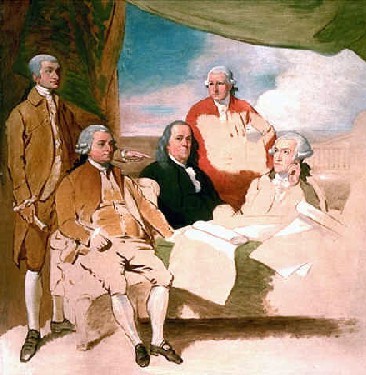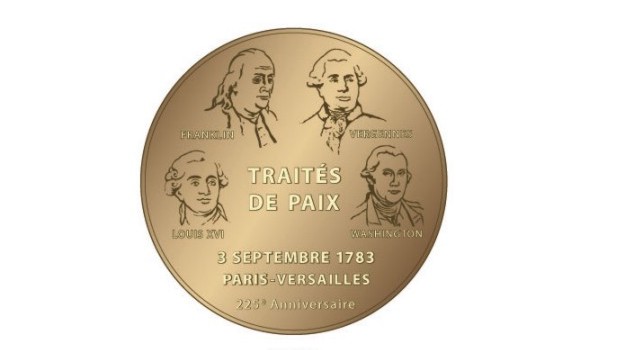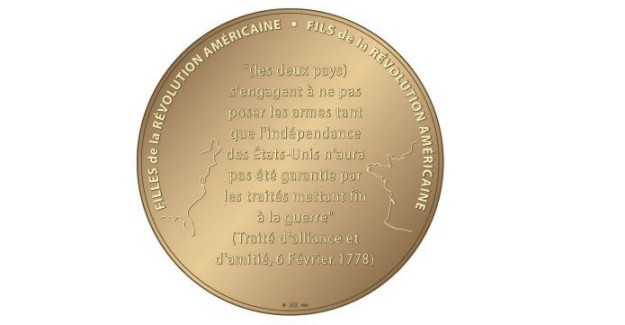|
An Exceptional Celebration: The Final Commemorative Event Celebrating the 225th Anniversary of the American War for Independence "The Peace Treaties Signed at Paris and Versailles on 3 September 1783" |

| On 3 September 1783 Great Britain formally acknowledged the independence of the United States with a definitive treaty signed in Paris. On the same date, Britain signed a peace settlement with France – the main formal ally to the Americans – and Spain at the château de Versailles.Manchester signed for Britain and Vergennes signed for France. |
| Unfinished painting shown here is by the contemporary artist Benjamin West to commemorate the signing of the 1783 Treaty of Paris. The painting shows the American signers John Jay, John Adams, and Benjamin Franklin. However, it inaccurately depicts Henry Laurens, who was not present. Also shown is William Temple Franklin, Franklin's grandson and secretary to the American delegation, but not a signer. The unfinished area was reserved for the British commissioners, Richard Oswald and David Hartley, who declined to pose. The signing took place at the British commissioner's lodgings at the Hôtel d'York, in the Quartier Latin of Paris. . | |
On the obverse, four founding fathers of the Franco-American friendship:
George Washington conducted the war of the patriots on the American continent and promoted the French alliance;
Comte de Vergennes designed and submitted to his King the alliance policy;
King Louis XVI (21-year old) decided to support the birth of a new republic;
Benjamin Franklin negotiated the adjustments of the two nations cooperation.
The reverse quotes, between sketches of the two coast lines, an article of the Alliance Treaty signed on February 6, 1778 by which France, first of all nations recognized the independence of the United States: the two parties mutually engage not to lay down their arms, until the Independence of the united states shall have been formally or tacitly assured by the Treaty or Treaties that shall terminate the War (Art. 8).
International Commemoration in France
During September 1 to 5 the Sons of the American Revolution (Branch Français) and the Daughters of the American Revolution
(Branch Français) -- both consisting mainly of descendants of Rochambeau's French Expeditionary Force --
provided an extensive program of speakers and visits to commemorate this historic event. See the program at 225th Anniversary of 1783 Peace Treaty in France
The Peace 1783 Peace Medal
The Peace of 1783 medal has been specially designed and cast by La Monnaie de Paris (a twelve-century old institution) for the Societies in France of the Sons and of the Daughters of the American Revolution to commemorate, on their 225th anniversary, the September 3, 1783 Peace Treaties of Paris and of Versailles.



Page posted 3 October 2008.